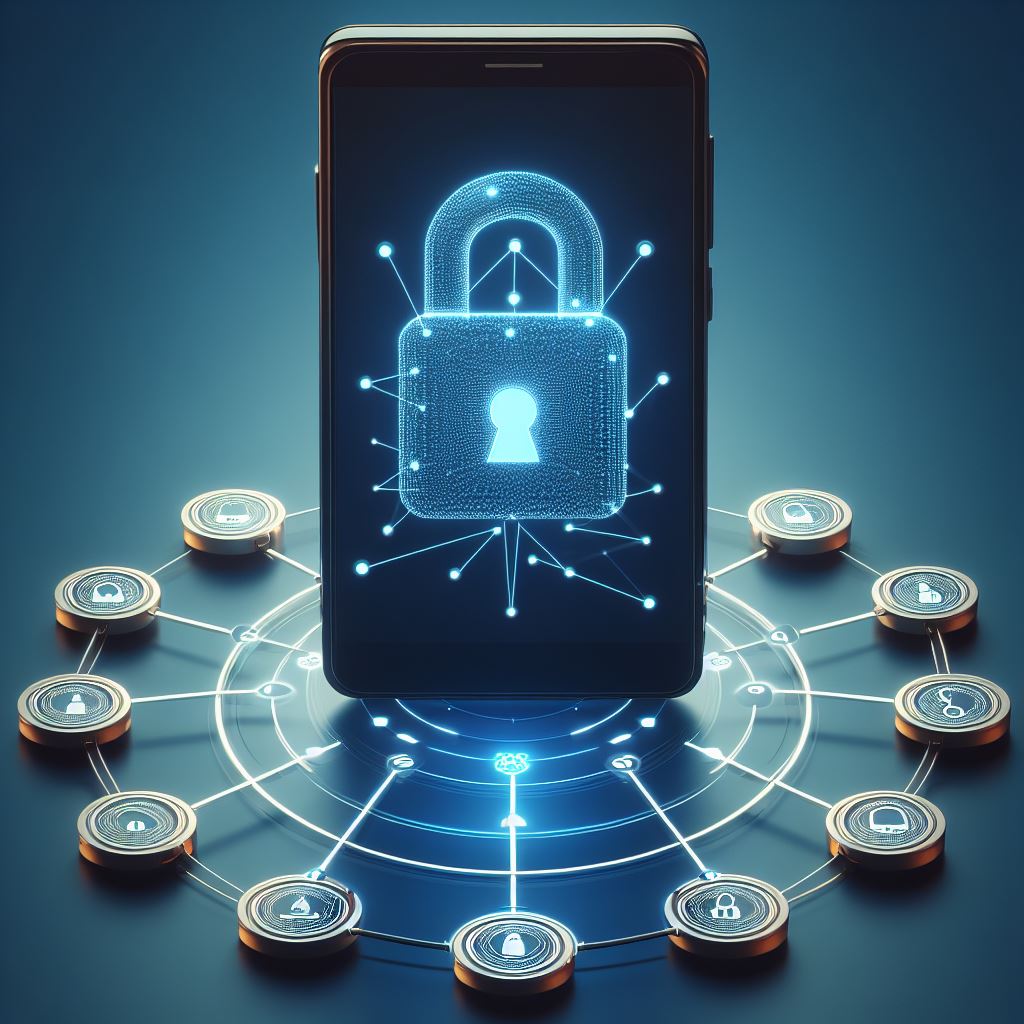13 Steps to Secure Your Q Link Wireless Free Plan

Imagine yourself navigating the digital landscape with confidence, knowing that your Q Link Wireless free plan is secure.
In just 13 simple steps, you can fortify your account against potential threats. Update your password, enable two-factor authentication, and set up a unique PIN for your voicemail.
Keep your device’s software up to date, install reliable antivirus software, and regularly back up your data.
With these measures in place, you can enjoy the benefits of your Q Link Wireless free plan worry-free.
Key Takeaways
- Updating your Q Link Wireless account password is an important account security measure.
- Enabling two-factor authentication adds an extra layer of security to your Q Link Wireless account.
- Keeping your device’s software up to date helps ensure device security.
- Installing reliable antivirus and anti-malware software on your device helps protect it from threats.
Update Your Q Link Wireless Account Password
To update your Q Link Wireless account password, follow these steps.
- Log in to your Q Link Wireless account using your current username and password.
- Once logged in, navigate to the account settings or profile section.
- Look for the option to change or update your password and click on it.
- You may be prompted to enter your current password for verification purposes.
- After entering your current password, you’ll need to create a new password.
- Make sure to choose a strong password that includes a combination of letters, numbers, and special characters.
- It’s important to create a unique password that isn’t easily guessable.
- Once you have entered your new password, confirm it by typing it again in the designated field.
- Finally, click on the save or update button to complete the process.
Your Q Link Wireless account password has now been successfully updated, providing you with enhanced security for your account.
Enable Two-Factor Authentication
To enhance the security of your Q Link Wireless account, you can enable two-factor authentication. This adds an extra layer of protection to your account by requiring a second verification step in addition to your password.
Here’s how you can enable two-factor authentication:
- Go to the Q Link Wireless website and log in to your account.
- Navigate to the account settings or security settings section.
- Look for the option to enable two-factor authentication.
- Follow the prompts to set up two-factor authentication, which may involve verifying your phone number or email address.
Enabling two-factor authentication provides several benefits. Firstly, it ensures that even if someone manages to obtain your password, they’d still need the second factor to gain access to your account. Secondly, it adds an extra barrier against unauthorized access, protecting your personal and financial information.
Thirdly, it gives you peace of mind knowing that your account is more secure. Lastly, it helps prevent identity theft and fraud, as the second factor acts as a verification step to confirm your identity.
Set up a Strong and Unique PIN for Your Voicemail
To further enhance the security of your Q Link Wireless account, set up a strong and unique PIN for your voicemail. Your voicemail contains private and sensitive information, so it is important to protect it with a PIN that is not easily guessable. Here are some steps to help you create a secure PIN:
| Steps | Description |
|---|---|
| Step 1 | Access your voicemail settings by dialing the voicemail number. |
| Step 2 | Follow the prompts to navigate to the PIN setup option. |
| Step 3 | Choose a PIN that is at least 6 digits long. |
| Step 4 | Avoid using easily guessable numbers like your birthdate or 1234. |
| Step 5 | Do not use repetitive or sequential numbers like 1111 or 123456. |
Keep Your Device’s Software up to Date
To ensure the security of your Q Link Wireless account, it’s crucial that you regularly update your device’s software. Keeping your software up to date not only enhances the performance of your device but also protects it from security vulnerabilities. Here are four reasons why updating your device’s software is essential:
- Patch Security Vulnerabilities: Software updates often include patches that fix security vulnerabilities. By regularly updating your device’s software, you can protect your Q Link Wireless account from potential threats.
- Stay Ahead of Hackers: Hackers are constantly developing new techniques to exploit outdated software. By keeping your device’s software up to date, you stay one step ahead of these malicious individuals.
- Improve Device Performance: Software updates often bring performance improvements, bug fixes, and new features. By updating your device’s software, you can ensure a smoother and more efficient user experience.
- Compatibility with New Apps: As technology evolves, new apps and services may require updated software versions. By keeping your device’s software up to date, you can enjoy the latest applications without any compatibility issues.
Install Reliable Antivirus and Anti-Malware Software
Protect your Q Link Wireless account by installing reliable antivirus and anti-malware software. With the increasing number of online threats, it’s crucial to have robust security measures in place to safeguard your personal information and prevent unauthorized access to your device. Antivirus software scans your device for malicious software and removes it, while anti-malware software specifically targets and neutralizes malware, such as spyware and adware. By installing these programs, you can detect and eliminate potential threats before they cause any harm.
When choosing an antivirus and anti-malware software, opt for reputable brands known for their effectiveness and reliability. Look for features such as real-time scanning, automatic updates, and regular system scans. These features ensure that your device is consistently protected against the latest threats. Regularly updating your software is also crucial, as it helps to patch any vulnerabilities and keep your security measures up to date.
In addition to antivirus and anti-malware software, consider enabling your device’s built-in security features, such as firewalls and secure browsing options. These additional layers of protection can further enhance your device’s security and defend against potential threats.
Be Cautious of Suspicious Emails and Phishing Attempts
When it comes to securing your Q Link Wireless account, it’s important for you to be cautious of suspicious emails and phishing attempts. These fraudulent tactics aim to deceive you into providing personal information or clicking on malicious links. To protect yourself, follow these steps:
- Verify the sender: Check the email address and look out for any spelling mistakes or strange domain names. Be skeptical of emails claiming to be from Q Link Wireless that ask for sensitive information.
- Avoid clicking on links: Hover your mouse over any links to see the actual URL. If it looks suspicious or unfamiliar, don’t click on it. Instead, manually type the website address into your browser.
- Be wary of urgent requests: Phishing emails often create a sense of urgency, pressuring you to take immediate action. Take a moment to evaluate the legitimacy of the request and contact Q Link Wireless directly if you have any doubts.
- Keep your software up to date: Regularly update your email client and web browser to ensure you have the latest security patches. This helps protect against known vulnerabilities that hackers may exploit.
Avoid Connecting to Public Wi-Fi Networks
To ensure the security of your Q Link Wireless account, it’s important that you avoid connecting to public Wi-Fi networks frequently. Public Wi-Fi networks, such as those found in coffee shops, airports, and hotels, are often unsecured and vulnerable to hackers. When you connect to these networks, your personal information, including usernames, passwords, and credit card details, can be easily intercepted by cybercriminals.
Hackers can set up fake Wi-Fi networks, known as ‘evil twin’ networks, that mimic legitimate ones to trick users into connecting. Once connected, they can gain access to your device and steal sensitive information. Even if the public Wi-Fi network is legitimate, other users connected to the same network can potentially see your online activities and capture your data.
To protect yourself, it’s recommended to avoid connecting to public Wi-Fi networks whenever possible. Instead, use your cellular data or wait until you have access to a secure and trusted network. If you must connect to a public Wi-Fi network, avoid accessing sensitive information such as online banking or shopping websites. Additionally, make sure to disable file sharing and enable your device’s firewall for added security.
Use a VPN for Additional Security
To further enhance the security of your Q Link Wireless free plan, consider using a VPN.
A VPN, or Virtual Private Network, provides an additional layer of protection by encrypting your internet connection and masking your IP address.
This added security helps safeguard your personal information and ensures that your online activities remain private and secure.
VPN for Enhanced Security
By utilizing a VPN, you can enhance the security of your Q Link Wireless free plan. Here are four reasons why using a VPN is essential for added security:
- Protect your online privacy: A VPN creates a secure and encrypted connection between your device and the internet, ensuring that your online activities are private and protected from prying eyes.
- Safeguard against hackers: Using a VPN adds an extra layer of security by encrypting your data, making it virtually impossible for hackers to intercept and steal your personal information.
- Bypass geo-restrictions: With a VPN, you can access websites and content that may be blocked or restricted in your location, giving you the freedom to browse the internet without limitations.
- Secure public Wi-Fi connections: Public Wi-Fi networks are often unsecured, making them vulnerable to attacks. By using a VPN, you can securely connect to public Wi-Fi hotspots and protect your sensitive information from potential threats.
Added Protection With VPN
For added security, you can enhance your Q Link Wireless free plan by using a VPN. A VPN, or Virtual Private Network, creates a secure connection between your device and the internet. It encrypts your internet traffic and masks your IP address, making it difficult for anyone to intercept or track your online activities. By using a VPN, you can protect your personal information, such as passwords and credit card details, from potential hackers and data breaches. Additionally, a VPN allows you to bypass geographical restrictions and access content that may be blocked in your region. To help you understand the benefits of using a VPN, here is a table highlighting its key features:
| Feature | Description |
|---|---|
| Encryption | Encrypts your internet traffic, ensuring it remains private and secure. |
| IP Masking | Masks your IP address, making it difficult to track your online activity. |
| Bypass Filters | Allows you to bypass geographical restrictions and access blocked content. |
| Anonymity | Provides anonymity by hiding your true identity while browsing online. |
Disable Automatic Network Connections
To secure your Q Link Wireless Free Plan, it’s essential to disable automatic network connections. By limiting network auto-connects, you can prevent unwanted connections and enhance network security.
This step ensures that you have control over which networks your device connects to, reducing the risk of unauthorized access and potential security breaches.
Limiting Network Auto-Connects
When securing your Q Link Wireless Free Plan, it’s important to be mindful of limiting network auto-connects. Automatic network connections can put your data at risk and potentially compromise the security of your device.
To ensure a secure connection, follow these steps:
- Disable auto-connect: Go to your device settings and turn off the automatic network connection feature. This will prevent your device from connecting to unknown or unsecured networks without your permission.
- Use trusted networks: Only connect to networks that you trust, such as your home or work network. Public Wi-Fi networks, like those found in cafes or airports, may be unsecured and pose a risk to your data.
- Enable network notifications: Enable notifications for network connections on your device. This will alert you when your device attempts to connect to a new network, allowing you to manually approve or deny the connection.
- Stay updated: Keep your device’s operating system and apps up to date. Updates often include security patches that address vulnerabilities and improve overall device security.
Preventing Unwanted Connections
Disable automatic network connections to prevent unwanted connections and enhance the security of your Q Link Wireless Free Plan. When your device automatically connects to any available network, it exposes your device to potential risks such as unauthorized access and data breaches. By disabling this feature, you have more control over the networks your device connects to, reducing the chances of connecting to malicious or unsecured networks.
To disable automatic network connections, navigate to the settings menu on your device and locate the Wi-Fi or network settings. Look for an option that allows you to manage network connections and disable the automatic connection feature. By taking this precautionary step, you can significantly enhance the security of your Q Link Wireless Free Plan.
Now, let’s move on to the next section and explore more ways to enhance network security.
Enhancing Network Security
To enhance the security of your Q Link Wireless Free Plan, you can prevent unwanted connections by disabling the automatic network connection feature on your device. Here are four reasons why this step is crucial:
- Protect your data: By disabling automatic network connections, you reduce the risk of connecting to unsecured or malicious networks that could compromise your personal information.
- Prevent unauthorized access: Disabling this feature ensures that your device won’t automatically connect to unknown or potentially harmful networks, preventing unauthorized access to your device and data.
- Avoid potential threats: Automatic network connections can expose your device to potential threats such as malware, viruses, and hacking attempts. Disabling this feature helps mitigate these risks.
- Maintain control over your connections: By manually selecting and connecting to networks, you have more control over the security and reliability of your network connections, ensuring a safer browsing experience.
Take control of your network connections and improve the security of your Q Link Wireless Free Plan by disabling the automatic network connection feature on your device.
Regularly Backup Your Device’s Data
Make sure you regularly back up your device’s data.
Regularly backing up your device’s data is crucial for keeping your information safe and secure. By creating backups, you can easily recover your data in case of device loss, theft, or damage.
There are various methods you can use to back up your data, such as using cloud storage services, external hard drives, or computer software.
Cloud storage services like Google Drive or iCloud allow you to store your data remotely, ensuring that even if your device is lost or damaged, your information remains accessible.
Additionally, you can use external hard drives to create physical backups of your data. These devices provide a reliable and portable solution for storing large amounts of data.
Another option is to use computer software that enables automatic backups. These programs can be set up to regularly back up your data without requiring manual intervention.
Remember to choose a backup method that suits your needs and preferences, and make it a habit to back up your device’s data regularly to protect yourself from potential data loss.
Opt for Secure Messaging Apps for Sensitive Communications
To ensure the security of your sensitive communications, it’s crucial to opt for encrypted messaging apps. These apps use advanced encryption techniques to protect your messages from unauthorized access.
Encrypted Messaging Apps
Choose a secure messaging app to protect sensitive communications on your Q Link Wireless free plan. With the increasing concern over privacy and data breaches, it’s crucial to ensure that your messages are encrypted and secure.
Here are four top encrypted messaging apps you can consider:
- Signal: Known for its strong encryption protocols, Signal offers end-to-end encryption for all your messages and calls, ensuring that only the intended recipient can access them.
- WhatsApp: This widely-used messaging app also utilizes end-to-end encryption, making it a reliable choice for secure communications.
- Telegram: Offering both secure messaging and self-destructing messages, Telegram provides an added layer of security for your sensitive conversations.
- Wire: With its focus on privacy and security, Wire offers end-to-end encryption, secure file sharing, and disappearing messages, making it an excellent choice for safeguarding your communications.
Privacy and Security
To ensure the privacy and security of your sensitive communications on your Q Link Wireless free plan, it’s essential that you consistently use encrypted messaging apps. These apps provide end-to-end encryption, which means that only the intended recipient can access and read the messages. Encrypted messaging apps use complex algorithms to scramble the messages, making them virtually impossible for hackers or third parties to decipher.
Popular secure messaging apps include Signal, WhatsApp, and Telegram. These apps not only encrypt your messages but also offer additional security features such as self-destructing messages and two-factor authentication. By opting for these secure messaging apps, you can have peace of mind knowing that your sensitive communications are protected from unauthorized access.
Now, let’s move on to the next step in securing your Q Link Wireless free plan, which is sensitive data protection.
Sensitive Data Protection
For enhanced protection of your sensitive data, ensure that you utilize secure messaging apps on your Q Link Wireless free plan. By using secure messaging apps, you can safeguard your personal information from unauthorized access and ensure that your conversations remain private and secure.
Here are four reasons why using secure messaging apps is essential for protecting your sensitive data:
- End-to-end encryption: Secure messaging apps use end-to-end encryption, which means that only the sender and recipient can read the messages. This prevents any third-party, including hackers and government agencies, from intercepting and accessing your conversations.
- Self-destructing messages: Some secure messaging apps offer the option to send self-destructing messages. These messages automatically delete themselves after a specified period, ensuring that no trace of the conversation remains.
- Two-factor authentication: Secure messaging apps often provide two-factor authentication, adding an extra layer of security. This means that even if someone manages to access your device, they’d still need an additional authentication factor, such as a unique code sent to your phone, to access the app.
- Secure file sharing: With secure messaging apps, you can safely share sensitive files, such as documents or images, without worrying about unauthorized access. These apps employ encryption to protect the files during transit and at rest.
Review and Adjust Your Privacy Settings
Take control of your privacy settings by reviewing and adjusting them on your Q Link Wireless Free Plan. Protecting your personal information is essential in today’s digital world.
By carefully managing your privacy settings, you can ensure that your data is secure and only shared with the necessary parties.
Start by logging into your Q Link Wireless account and navigating to the privacy settings section. Here, you’ll find options to control who can access your information and how it’s shared. Take the time to review each setting and consider the level of privacy you desire.
One important setting to adjust is your profile visibility. You can choose to make your profile public, visible only to your friends, or completely private. By limiting the visibility of your profile, you can prevent unauthorized access to your personal information.
Another crucial setting to check is your data sharing preferences. Q Link Wireless may collect certain data for analytics purposes or to improve their services. However, you have the right to control how your data is shared. Adjust these settings to limit data sharing to the extent that you’re comfortable with.
Additionally, review the permissions you have granted to third-party applications. Some apps may request access to your personal information. Assess these permissions and revoke any that you no longer deem necessary.
Regularly reviewing and adjusting your privacy settings on your Q Link Wireless Free Plan is crucial for safeguarding your personal information. By following these steps, you can take control of your privacy and secure your digital presence.
Educate Yourself on Common Mobile Security Threats and Best Practices
Regularly educate yourself on common mobile security threats and best practices to effectively protect your Q Link Wireless Free Plan.
As technology advances, so do the tactics of cybercriminals. Stay one step ahead by staying informed about the latest threats and implementing the best security practices. Here are four important things to know:
- Phishing Attacks: Be cautious of suspicious emails, messages, or pop-ups asking for personal information. Cybercriminals often impersonate legitimate organizations to trick you into revealing sensitive data.
- Malware and Viruses: Install a reputable antivirus software on your mobile device to protect against malware and viruses. Regularly update the software to ensure it can detect and remove the latest threats.
- Wi-Fi Security: Be wary of connecting to public Wi-Fi networks, as they can be hotspots for hackers. If you must use public Wi-Fi, use a virtual private network (VPN) to encrypt your internet connection and protect your data.
- App Permissions: Review the permissions requested by apps before installing them. Only grant access to necessary features and data, and regularly review and revoke permissions for apps you no longer use.
Frequently Asked Questions
What Are Some Common Mobile Security Threats That Users Should Be Aware Of?
Mobile security threats you should be aware of include malware, phishing attacks, and data breaches. These can compromise your personal information, steal your identity, and cause financial loss. Stay vigilant and protect your device.
How Can I Update My Q Link Wireless Account Password?
To update your Q Link Wireless account password, simply log in to your account on the website or app. Then, navigate to the account settings and choose the option to change your password.
Why Is It Important to Enable Two-Factor Authentication for My Q Link Wireless Account?
Enabling two-factor authentication for your Q Link Wireless account is important because it adds an extra layer of security. It helps prevent unauthorized access to your account, ensuring that only you can log in.
How Can I Set up a Strong and Unique PIN for My Voicemail?
To set up a strong and unique PIN for your voicemail, access your Q Link Wireless account settings. Choose a combination of numbers that are easy for you to remember but difficult for others to guess.
What Are Some Secure Messaging Apps That I Can Use for Sensitive Communications?
To securely communicate sensitive information, use secure messaging apps like Signal, Wickr, or Telegram. These apps encrypt your messages and provide additional security features to protect your conversations from unauthorized access.



